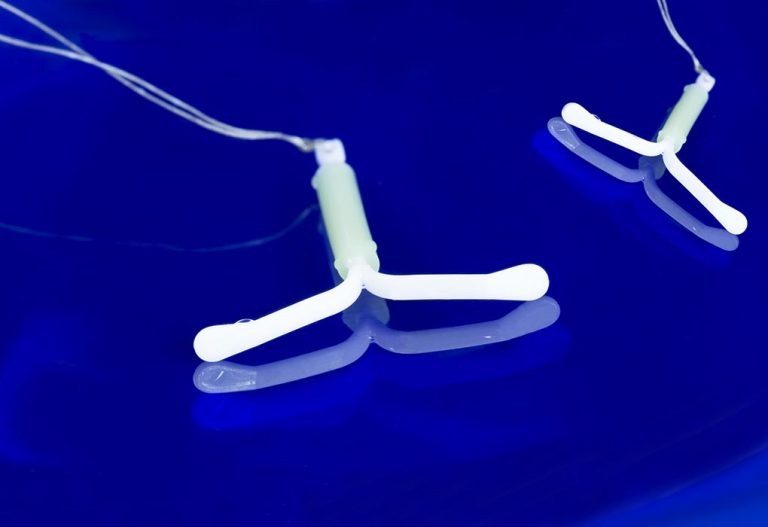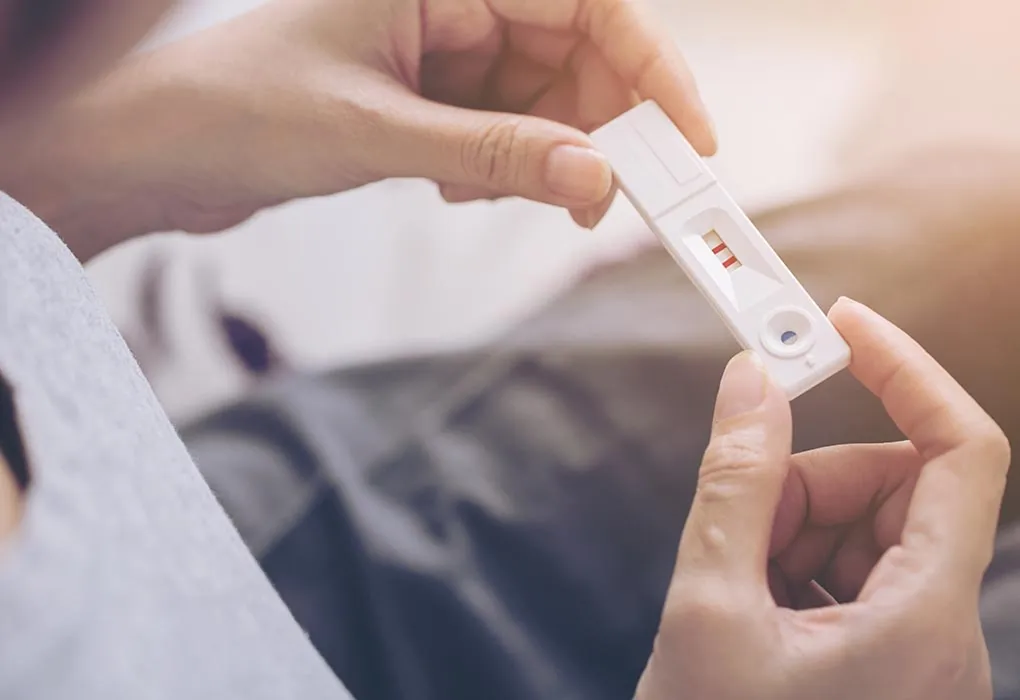Pregnant With an IUD – Is It Possible, Risks, & More

The intrauterine device (IUD) has become a favourite choice for many women because it’s simple, low-maintenance, and highly effective. Once placed in the uterus, it can work for 3 to 10 years, depending on the type used. With a success rate of more than 99%, it’s often considered one of the most dependable forms of birth control. But here’s the thing: no method is perfect. In rare cases, pregnancy can still occur with an IUD in place, and when it does, it may bring certain risks and complications for both mother and baby.
In this article, we’ll look at how pregnancy with an IUD happens, the risks involved, and what you should know if you ever face this situation, so keep reading to find out more.
Can You Get Pregnant With an IUD?
Although intrauterine devices are one of the most effective forms of birth control, their rate of being effective rate is about 98%. Therefore, there is a narrow margin, and it is observed that the odds of pregnancy with IUD are 3 cases out of 100. The American Congress of Obstetricians and Gynecologists (ACOG) says that the failure rate of IUDs during the first year of use is less than 1%, the same as sterilisation procedures like “tube tying” (1). In rare cases where pregnancies do occur, it’s usually caused by the device slipping partly or completely out of place. In fewer cases, the IUD may move and become embedded in the uterus and lose its effectiveness.
Signs & Symptoms of an IUD Pregnancy
Unlike the oral contraceptives, IUDs do not cause any changes in the body after it is put in place. Ovulation is not blocked, the endometrium continues to grow, and menstruation continues as normal (although, this depends on the type of IUD, which may cause bleeding to become much lighter or have it reduce altogether). The IUD only offers mechanical protection by not allowing the fertilised egg to implant in the uterine wall. In rare conditions, this protection can fail, and pregnancy proceeds as normal. Early pregnancy symptoms with the IUD is same as a normal pregnancy. These symptoms characterise it:
- Delay in menstruation
- Morning sickness and dizziness
- Increase in the basal body temperature
- Feeling tired, drowsy or fatigued
- Lower abdominal pain
- Loss of appetite in some women, conversely, excessive hunger
What to Do If You Suspect Pregnancy While Having an IUD?
It is not uncommon for women to worry about pregnancy when they are on an IUD. Many experience unusual bleeding for the first few months after the device is inserted. It is then normally followed by periods that are lighter and shorter; some even stop having periods entirely. Therefore, if you suspect that you are pregnant with IUD in place, follow these three steps (2):
1. Take a Pregnancy Test
If you feel symptoms of pregnancy and need to confirm it, the best way is to take a pregnancy test. A home pregnancy test is reliable. If you’re still in doubt, schedule a blood test for pregnancy with your doctor.
2. Visit Your Doctor
When you become pregnant, especially with an IUD in place, there’s a significant risk of an ectopic pregnancy (a pregnancy where the fertilised egg implants outside the uterus). Ectopic pregnancies are emergencies; therefore you need to visit your doctor immediately for a diagnosis.
3. Have the IUD Removed
If your pregnancy is viable and non-ectopic while the IUD is still in place, your doctor may recommend its removal (3). The doctor or a trained staff does this. It’s important not to try and remove it by yourself, as it is unsafe for the foetus.
Risks of IUD Pregnancy
IUDs are used to prevent pregnancies, so what happens if you get pregnant with an IUD? Knowing the risks of IUD and pregnancy can help you make better health decisions. Here are the main risks to be aware of (3) (4):
1. Miscarriage
A miscarriage is a significant risk when women get pregnant with an IUD. If the IUD is left in place during the pregnancy, the miscarriage rate goes up by 40-50 per cent. Removing it early on reduces the risk; however, it is still higher than normal women who got pregnant without an IUD (5).
2. Preterm Birth
Leaving the IUD in place during pregnancy also increases the chances of preterm birth along with miscarriage. It is seen that women who have an IUD in place during their pregnancy have five times more chances of giving birth prematurely than women who don’t. Removing the IUD early on lowers the risk of preterm birth.
3. Infection
Susceptibility to chorioamnionitis is high among pregnant women who have IUDs. It is an infection of the membranes surrounding the fetus and the amniotic fluid which can be potentially life-threatening (6). Removing the IUD early in pregnancy lowers the risk of the infection but does not remove it completely.
4. Placental Abruption
When the placenta separates from the uterine wall either before or during the delivery, it is called placental abruption. There could be a link between having the IUD in place and placental abruption (5).
5. Hormone Exposure
Hormonal IUDs pose a risk to the foetus as they slowly release progestin into the uterus. The long-term effects on babies are not fully understood. However, increased risk of congenital disabilities does not appear to be among the risks.
Is There an Instance Where a Doctor May Suggest ‘No IUD Removal’?
If you wish to continue your pregnancy, ideally the IUD should be removed. It is done if the strings are visible from the cervix and can be grasped. The pregnancy will then continue without complications, although there are slightly higher chances of miscarriage, infections and preterm labour. When the risk of removing the IUD outweighs the risk of leaving it in place, your doctor would suggest a ‘No IUD Removal’. There are instances where women have given birth to healthy babies even with the IUD. It usually so happens that as the baby grows; the IUD gets pushed out, somewhere around the middle of the term.
Possible Reasons for IUD Failure
Even though IUDs are one of the most effective birth control options available, they aren’t completely fail-proof. Here are some common reasons why an IUD might not work as intended:
- Expulsion of the IUD: Sometimes the IUD can partially or completely slip out of the uterus, especially within the first few months of insertion. This reduces its effectiveness and may go unnoticed.
- Improper Placement: If the IUD isn’t inserted correctly or shifts from its intended position, it may not provide full protection against pregnancy.
- Using an Expired IUD: Each IUD has a lifespan of 3 to 10 years depending on the type. Using it beyond this timeframe increases the chances of failure.
- Type of IUD and Timing of Insertion: Copper IUDs, such as Paragard, provide immediate protection once inserted. However, hormonal IUDs, like Mirena, can take up to 7 days to become fully effective.
Tips to Protect Yourself From an Unwanted IUD Pregnancy
When used perfectly, IUDs are very effective at preventing pregnancies. Here are some steps to make sure that an unwanted pregnancy doesn’t occur with the IUD.
1. Visit Your Gynaecologist Regularly
Once a year, visit your gynaecologist and have an ultrasound scan of your uterus done. It can reveal any displacement of the IUD or even its loss. These two are the major causes of unwanted pregnancy when using an IUD.
2. Monitor the IUD Strings
Once a month, you can check if the device is properly in place by feeling for the strings attached to the device. They extend down from the cervix to the top of the vagina and can be felt with your fingers. An increase in their length would mean that the device has been displaced into the cervix. The disappearance of the strings mostly indicates a loss of the IUD. Both of these conditions mandate a visit to the gynaecologist and a pregnancy test if the device is missing.
3. Know the Expiration Date
All IUDs have an expiration date; 3-5 years on an average after which they must be removed or replaced with a new one. When left beyond their time, they may embed themselves into the uterus walls making it difficult to remove and increase the chances of infections.
When to Consult the Doctor
If you have an IUD, it’s important to reach out to your doctor if you:
- Are planning to become pregnant or suspect you might be pregnant.
- Think your IUD may have moved or slipped out of place.
- Want to have your IUD removed or replaced.
You should also contact your doctor if you experience any unusual symptoms while using an IUD, such as:
- Fever, chills, or other signs of infection.
- Severe or persistent lower abdominal pain or cramps.
- Unusual vaginal discharge or heavier than normal bleeding.
- Pain or bleeding during sexual activity.
Most side effects of an IUD are minor and temporary, but in rare cases, serious complications can occur. These may include ectopic pregnancy, bacterial infection, or perforation of the uterus, which require immediate medical attention (3) (4).
FAQs
1. Does age affect the risk of IUD failure?
IUD effectiveness is generally high across all ages, but younger women may have slightly higher expulsion rates due to a more active uterus.
2. Can heavy periods affect IUD effectiveness?
Heavy menstrual bleeding doesn’t usually reduce effectiveness, but in some cases, copper IUDs can worsen bleeding, which may lead to removal or monitoring (4) (7).
Many women have questions about the odds of getting pregnant with an IUD. With proper usage, IUDs are very effective at preventing pregnancy. In the rare event that you do get pregnant with one in place, consult your doctor immediately.
Also Read:
Pregnancy Symptoms after IUI
Get Pregnant with Irregular Periods
Is It Possible to Get Pregnant after IUD Removal?
Was This Article Helpful?
Parenting is a huge responsibility, for you as a caregiver, but also for us as a parenting content platform. We understand that and take our responsibility of creating credible content seriously. FirstCry Parenting articles are written and published only after extensive research using factually sound references to deliver quality content that is accurate, validated by experts, and completely reliable. To understand how we go about creating content that is credible, read our editorial policy here.


























